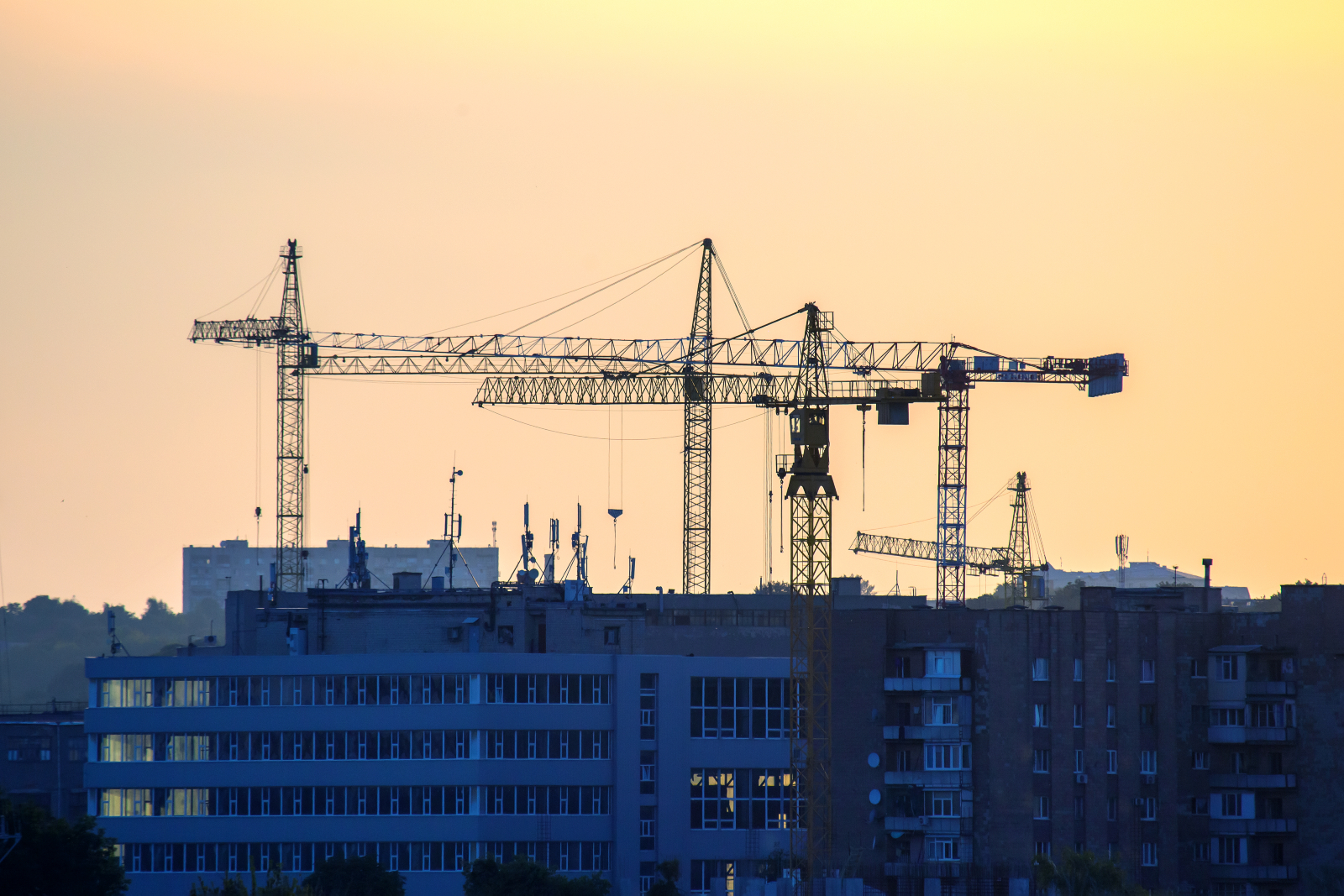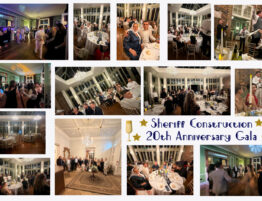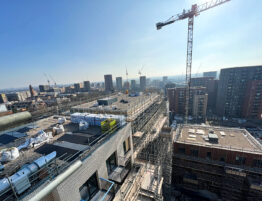
We’ve reached that time of year again. It’s a few weeks since the clocks turned back, the afternoons feel like night-time and many people in construction – whether on site or in office-based roles – are starting and finishing their working day in the dark.
Shorter, darker days can increase the risk of accidents on site, make commuting more hazardous and create extra opportunities for crime. The good news is that a few simple habits and precautions can make a big difference. In this blog, we look at three key areas for staying safe: working on site, driving to and from work and protecting sites from crime.
1. Worker safety in the dark
Poor visibility, bad weather and fatigue can all combine to put workers and projects at greater risk. Here are some top tips:
- Improve visibility on site: Look at your site through a ‘lighting lens’. are access routes, stairs, loading areas and vehicle paths properly lit, or are there shadows and blind spots once the light drops? Use lighting designed for outdoor construction sites and back this up with portable options like head torches or torches where fixed units aren’t practical. Replace damaged fittings and blown bulbs quickly, and keep lamps clean so you’re getting the full benefit.
- Make yourself easy to see: In winter, hi-vis PPE is your first line of defence. Check that vests, jackets and trousers still reflect properly and aren’t faded, ripped or stained. When the temperature drops, layer up so your high-visibility gear stays on the outside, with reflective strips and bright colours clearly visible.
- Manage fatigue: Low light, cold temperatures and long days all chip away at energy levels – and tiredness makes mistakes more likely. Build in short breaks to stretch, hydrate or grab a hot drink so you can reset and refocus. Where you can, rotate people off high-risk or high-concentration tasks, especially early in the morning or towards the end of a shift.
- Be prepared: Make sure everyone knows the quickest routes to exits and first-aid stations – if something does go wrong, you don’t want to be figuring it out for the first time.
- Take extra care if working alone: If you’re on site by yourself, someone should know where you are and when you’re due to finish – whether that’s through a simple check-in system, an app or a lone-worker device. Keep a way of raising the alarm on you at all times, such as a personal alarm, radio or fully charged mobile phone. And be cautious about what you take on: if a job would usually need two people in daylight, think twice before attempting it solo in the dark.
2. Driving safely in the dark
For many construction workers, getting to and from site is one of the most hazardous parts of the day – especially in winter, when visibility is poor and road conditions can be unpredictable. Here’s how to reduce the risk of an accident:
- Keep your vehicle winter-ready: Make sure your vehicle is up to the job by checking that all headlights, brake lights, indicators and fog lights are working and clean, replacing any dim or failed bulbs straight away. Keep an eye on tyre tread and pressures and make sure your brakes feel responsive – wet, icy or leaf-covered roads demand maximum grip. Keep a basic winter kit in the vehicle – de-icer, scraper, torch, hi-vis vest, blanket and a mobile phone charger.
- Adjust your driving for darker conditions: Reduced visibility means reduced reaction time, so slow down and leave extra space between you and the vehicle in front. Be honest about how tired you feel – early starts, long shifts and driving in the dark can all lead to drowsiness. It’s far safer to pull over for a short break than to push on. Use your headlights correctly: dipped beams in built-up areas and full beam on unlit roads (always dipping them again for oncoming traffic or when you’re following another vehicle).
- Travel together where possible: Car sharing with colleagues reduces the number of tired drivers on the road and allows people to take turns behind the wheel. If you’re using public transport and then walking, try to buddy up – particularly for early starts, late finishes or when passing through quieter areas. And remember the ‘shortest’ way isn’t always the safest; a slightly longer route may be worth it if it’s better lit, better maintained or more frequently used.
3. Securing the site from crime
Darker hours create more opportunities for theft, vandalism and other criminal activity. A well-secured site protects people, equipment and materials.
- Light up the perimeter and key areas: Good lighting is one of the simplest and most effective deterrents. Make sure entrances, storage areas, vehicle parks and walkways are well lit so there are fewer places for intruders to hide. Motion-sensor (PIR) lighting can be especially useful, drawing attention to movement out of hours and supporting CCTV by improving visibility and image quality.
- Protect equipment, materials and data: At the end of each shift, lock tools, plant and smaller equipment away in secure containers or compounds, using robust, tamper-resistant locks and keeping keys under tight control. Cover or store loose materials like bricks, blocks or metal that might be stolen or used for vandalism. Don’t forget the tech – laptops, tablets and phones should be kept out of sight when not in use, stored in locked offices or cabinets overnight, and protected with strong passwords.
- Strengthen physical and human defences: A strong perimeter is vital – whether that’s solid hoarding or high-quality fencing that restricts views into the site and makes climbing difficult. Clear signage warning about trespass, prosecution and CCTV reinforces the message that the site is monitored. For higher-risk projects, consider monitored CCTV systems and SIA-accredited security guards to provide a visible presence and rapid response if something does happen.
Final thoughts: let’s keep each other safe
Dark winter months are an unavoidable part of working in construction in the UK, but increased risk doesn’t have to be. By protecting workers on site, driving carefully to and from work, and securing sites against crime, we can all contribute to safer projects and fewer incidents.
Have you introduced any additional measures on your site, or do you have your own tips for staying safe in the dark? We’d love to hear them – share your ideas with us over on our Facebook or LinkedIn pages and help other construction workers stay safe this winter.
20.11.2025
Feature image: Freepik








